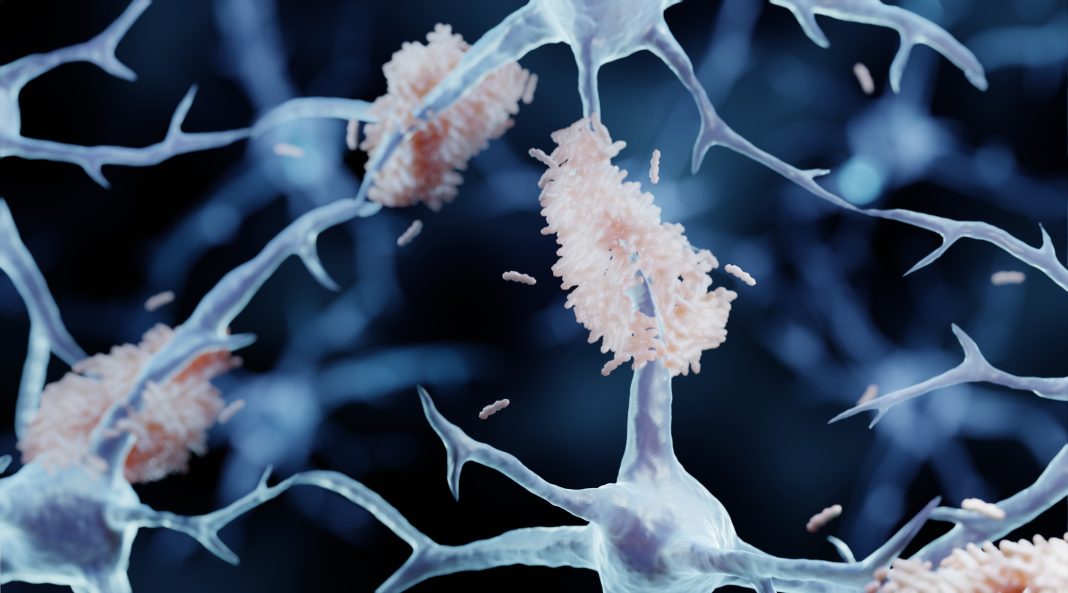A new way to combat Alzheimer’s disease has been discovered by researchers at the RIKEN Center for Brain Science (CBS) in Japan. Using mice with the disease, the researchers found that treatment with dopamine could alleviate physical symptoms in the brain as well as improve memory. If similar results are found in human clinical trials, it may lead to a novel way to treat the disease.
The findings are published in Science Signaling in an article titled, “The dopaminergic system promotes neprilysin-mediated degradation of amyloid-β in the brain,” and was led by Takaomi Saido, PhD, and his team at CBS.
The study examines dopamine’s role in promoting the production of neprilysin, an enzyme that can break down the harmful plaques in the brain that are the hallmark of Alzheimer’s disease. If similar results are found in human clinical trials, it may lead to a novel way to treat the disease.
“Deposition of amyloid-β (Aβ) in the brain can impair neuronal function and contribute to cognitive decline in Alzheimer’s disease (AD),” the researchers wrote. “Here, we found that dopamine and the dopamine precursor levodopa (also called l-DOPA) induced Aβ degradation in the brain. Chemogenetic approaches in mice revealed that the activation of dopamine release from ventral tegmental area (VTA) neurons increased the abundance and activity of the Aβ-degrading enzyme neprilysin and reduced the amount of Aβ deposits in the prefrontal cortex in a neprilysin-dependent manner.”
In the new study, Saido’s team at RIKEN CBS focused on the enzyme neprilysin because previous experiments showed that genetic manipulation that produces excess neprilysin in the brain—a process called upregulation—resulted in fewer beta-amyloid plaques and improved memory in mice.
Neprilysin pills or injections are not feasible because they cannot enter the brain from the bloodstream. The first step in the new study was a screening of many molecules to determine which ones can naturally upregulate neprilysin in the correct parts of the brain. The team’s previous research led them to narrow down the search to hormones produced by the hypothalamus, and they discovered that applying dopamine to brain cells cultured in a dish yielded increased levels of neprilysin and reduced levels of free-floating beta-amyloid.

The final experiments tested the effects of L-DOPA treatment. L-DOPA is a dopamine precursor molecule often used to treat Parkinson’s disease because it can enter the brain from the blood, where it is then converted into dopamine. Treating the model mice with L-DOPA led to increased neprilysin and decreased beta-amyloid plaques in both frontal and posterior parts of the brain. Model mice treated with L-DOPA for three months also performed better on memory tests than untreated model mice.
Tests showed that neprilysin levels naturally decreased with age in normal mice, particularly in the frontal part of the brain, perhaps making it a good biomarker for preclinical or at-risk Alzheimer’s disease diagnoses. How dopamine causes neprilysin levels to increase remains unknown, and is the next research topic for Saido’s group.
“We have shown that L-DOPA treatment can help reduce harmful beta-amyloid plaques and improve memory function in a mouse model of Alzheimer’s disease,” explained Watamura Naoto, first author of the study. “But L-DOPA treatment is known to have serious side effects in patients with Parkinson’s disease. Therefore, our next step is to investigate how dopamine regulates neprilysin in the brain, which should yield a new preventive approach that can be initiated at the preclinical stage of Alzheimer’s disease.”


